Explore Coldfall Wood with our interactive map.
Hover over the stars to find out more about what you can discover as you walk through the wood.
Click on the historical map to see how the area has changed over the centuries.

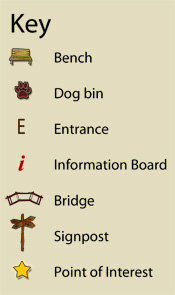
Historical Map - see how the area has changed over the years.
Download a printable version of the map to help you find your way around the wood.
![]() Our map requires Acrobat Reader which you can download here.
Our map requires Acrobat Reader which you can download here.
Explore Coldfall Wood with our interactive map.
Hover over the stars to find out more about what you can discover as you walk through the wood.
Click on the historical map to see how the area has changed over the centuries.

© Map, illustrations & bluebell wood photo copyright Ask Auk.com
Photo glow worm: Majka GC, MacIvor JS (2009) The European lesser glow
worm, Phosphaenus hemipterus (Goeze), in North America (Coleoptera,
Lampyridae). ZooKeys 29: 35-47. doi:10.3897/zookeys.29.279
All other photographs copyright Keith Good, Friends of Coldfall Wood
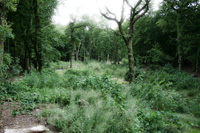 The Everglades -
Known locally as the Everglades, this seasonal pond has developed due
to silt deposits which regularly block the entrance to the culvert where
the stream flows beneath the playing fields.
The Everglades -
Known locally as the Everglades, this seasonal pond has developed due
to silt deposits which regularly block the entrance to the culvert where
the stream flows beneath the playing fields. 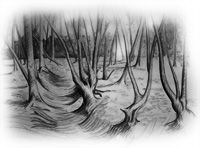 Ancient ditch and bank -
In the middle ages Coldfall Wood was surrounded by grazing land, on
which the commoners could pasture their animals. These animals were not
allowed into the Wood as they would eat the young coppiced trees, so a
bank was made to protect it with a ditch on the outside.
Ancient ditch and bank -
In the middle ages Coldfall Wood was surrounded by grazing land, on
which the commoners could pasture their animals. These animals were not
allowed into the Wood as they would eat the young coppiced trees, so a
bank was made to protect it with a ditch on the outside. 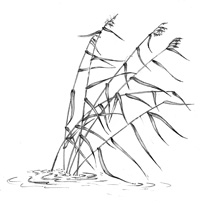 Reed beds -
Reed beds are a natural and very effective solution to dealing with
pollution in streams and rivers. The reeds trap and filter out the
pollutants, allowing cleaner water to continue through to the stream
beyond.
Reed beds -
Reed beds are a natural and very effective solution to dealing with
pollution in streams and rivers. The reeds trap and filter out the
pollutants, allowing cleaner water to continue through to the stream
beyond.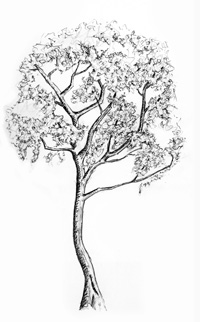 Trees -
There are two main species of tree in the woods - oak and hornbeam.
Coldfall Wood is officially classified as an ancient semi-natural
woodland. The trees are thought to be the direct descendants of wild
trees - giving a direct continuity back to the days of the "Wild Wood"
some 7000 years ago.
Trees -
There are two main species of tree in the woods - oak and hornbeam.
Coldfall Wood is officially classified as an ancient semi-natural
woodland. The trees are thought to be the direct descendants of wild
trees - giving a direct continuity back to the days of the "Wild Wood"
some 7000 years ago. 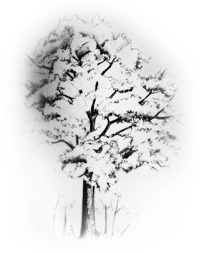 Wild service tree -
A rare tree that is an indicator of ancient woodland. Service trees
have a slightly chequered bark and mainly propagate by suckers, so many
young trees can be found nearby. In the past the berries were reported
to have been used for beer (they still are in Germany and other parts of
Europe) and to alleviate stomach problems.
Wild service tree -
A rare tree that is an indicator of ancient woodland. Service trees
have a slightly chequered bark and mainly propagate by suckers, so many
young trees can be found nearby. In the past the berries were reported
to have been used for beer (they still are in Germany and other parts of
Europe) and to alleviate stomach problems.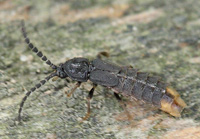 Invertebrates -
In 2009 The Friends of Coldfall Wood commissioned an invertebrate
survey. The most interesting beetle recorded during the survey was the
very rare lesser glow worm (Phosphaenus hemipterus). There have been very few recorded in the whole of the UK and until now none has been recorded north of the River Thames!
Invertebrates -
In 2009 The Friends of Coldfall Wood commissioned an invertebrate
survey. The most interesting beetle recorded during the survey was the
very rare lesser glow worm (Phosphaenus hemipterus). There have been very few recorded in the whole of the UK and until now none has been recorded north of the River Thames!
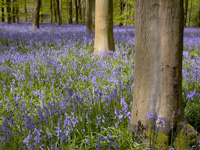 Flora -
In spring it is possible to see bluebells in the woods - and these are
often an indicator of ancient woodland. The coppicing has allowed light
to penetrate through to the woodland floor allowing many plants to grow
along the banks of the stream including herbs such as lemon balm, wild
strawberries and even watercress!
Flora -
In spring it is possible to see bluebells in the woods - and these are
often an indicator of ancient woodland. The coppicing has allowed light
to penetrate through to the woodland floor allowing many plants to grow
along the banks of the stream including herbs such as lemon balm, wild
strawberries and even watercress!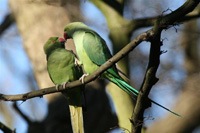 Birds -
There are many birds in Coldfall Wood including two types of woodpecker
- The great spotted and green woodpecker. Parakeets and butterflies
love to fly down the stream and there are nesting boxes for owls and
roosting boxes for bats.
Birds -
There are many birds in Coldfall Wood including two types of woodpecker
- The great spotted and green woodpecker. Parakeets and butterflies
love to fly down the stream and there are nesting boxes for owls and
roosting boxes for bats.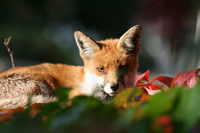 Mammals -
Foxes can regularly be seen in the woods at dusk and early morning and
there have also been reports of hedgehogs and the rumour of sightings of
a muntjac deer.
Mammals -
Foxes can regularly be seen in the woods at dusk and early morning and
there have also been reports of hedgehogs and the rumour of sightings of
a muntjac deer.
The Friends of Coldfall Wood helped to put up roosting boxes for bats.
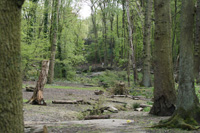 Coppicing -
Coppicing is the term given to the practise of cutting back trees such
as hornbeam to enable them to regenerate and produce new growth.
Coppicing -
Coppicing is the term given to the practise of cutting back trees such
as hornbeam to enable them to regenerate and produce new growth.